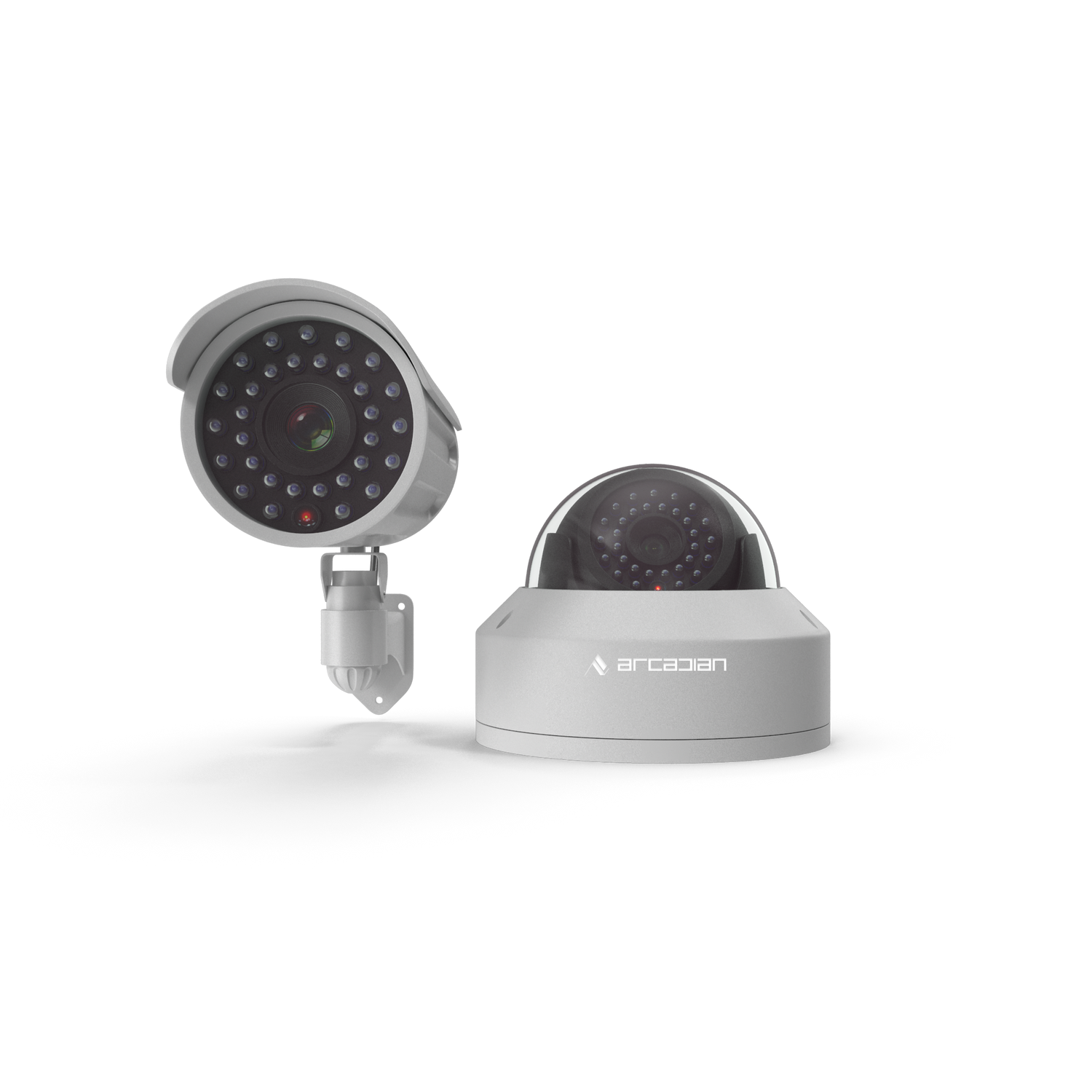The Role of Security Guards and Remote Monitoring in Shopping Malls
Shopping malls are bustling hubs of activity, attracting thousands of visitors daily. From retail stores and food courts to entertainment spaces, these complex environments present unique security challenges. With large crowds and high-value assets, shopping malls can be prime targets for theft, vandalism, and other criminal activities. As such, a...

Shopping malls are bustling hubs of activity, attracting thousands of visitors daily. From retail stores and food courts to entertainment spaces, these complex environments present unique security challenges. With large crowds and high-value assets, shopping malls can be prime targets for theft, vandalism, and other criminal activities. As such, a robust security system is essential to ensure the safety of customers, staff, and property.
Two critical components of modern mall security are security guards and remote monitoring systems. Both play complementary roles in safeguarding the premises, deterring potential threats, and responding quickly to incidents. In this blog post, we’ll explore how security guards and remote monitoring work together to create a comprehensive security strategy for shopping malls.
1. The Role of Security Guards in Shopping Malls
Security guards remain a crucial element of mall security due to their ability to provide a physical presence and respond in real time. Their visibility acts as a deterrent to potential criminals, while their training allows them to handle a range of security issues, from petty theft to emergencies.
Key responsibilities of security guards in shopping malls include:
1.1. Visible Deterrence and Presence
A visible security presence plays a vital role in deterring criminal activities. When potential shoplifters or vandals see uniformed guards patrolling the mall, they are less likely to attempt illegal activities. Guards also reassure mall visitors and employees, creating a safer environment for everyone.
1.2. Patrolling and Monitoring High-Risk Areas
Security guards regularly patrol various sections of the mall, focusing on high-risk areas such as entrances, exits, parking lots, and stores that carry high-value goods. Their patrolling serves as a preventive measure to stop thefts or vandalism before they occur.
1.3. Responding to Incidents
One of the primary responsibilities of security guards is to respond quickly and effectively to incidents. Whether it's a shoplifting attempt, a medical emergency, or a disturbance, guards are trained to de-escalate situations and manage emergencies until law enforcement or emergency services arrive. Their ability to be on-site and immediately address problems is crucial for keeping the shopping mall safe.
1.4. Access Control and Crowd Management
In addition to patrolling, security guards are often stationed at mall entrances and exits to control access to the building. This is particularly important during special events or high-traffic days, such as Black Friday, where crowd management is essential to prevent stampedes or overcrowding. Guards also manage restricted areas, ensuring that unauthorized individuals don’t enter specific parts of the mall.
1.5. Customer Assistance
In addition to safety, security guards often assist customers, providing directions, helping lost children, or addressing customer concerns. This enhances the overall shopping experience and helps create a positive environment for visitors.
2. The Role of Remote Monitoring in Shopping Malls
While security guards are critical for a physical security presence, remote monitoring adds another layer of protection by providing continuous surveillance through advanced technologies. Remote monitoring systems, powered by AI, video analytics, and real-time alerts, enable mall security teams to monitor activities across the entire shopping mall without needing personnel stationed everywhere.
Key functions of remote monitoring include:
2.1. 24/7 Surveillance Coverage
One of the biggest advantages of remote monitoring is its ability to provide 24/7 surveillance coverage. Cameras strategically placed throughout the mall, parking lots, and other high-traffic areas feed real-time footage to a central monitoring station. This ensures that no area goes unwatched, even when security guards are focused on specific incidents.
2.2. AI-Powered Video Analytics for Threat Detection
Advanced video surveillance systems equipped with AI and video analytics can detect suspicious behavior or unusual activities that might indicate a security threat. For example, AI systems can identify loitering, crowd formations, or shoplifting attempts, sending real-time alerts to security teams when such behaviors are detected. This reduces the reliance on human monitoring and enhances the overall efficiency of security efforts.
2.3. Integration with Access Control Systems
Remote monitoring systems can be integrated with access control systems to monitor who enters or exits specific areas of the mall. For example, restricted areas such as maintenance rooms or employee-only zones can be monitored remotely, ensuring that only authorized personnel have access.
2.4. License Plate Recognition in Parking Lots
Remote monitoring systems with license plate recognition (LPR) technology allow mall security to track vehicles entering and exiting parking lots. This technology can help identify stolen cars, monitor suspicious vehicles, or aid in investigating hit-and-run incidents in parking areas.
2.5. Incident Response and Evidence Collection
In the event of a crime or emergency, remote monitoring systems provide real-time video footage that can be shared with security guards or law enforcement. This footage not only aids in immediate responses but also serves as evidence for investigations and legal proceedings.
3. The Synergy Between Security Guards and Remote Monitoring
While both security guards and remote monitoring systems are highly effective individually, their true strength lies in working together. Combining human expertise with advanced technology provides a multi-layered approach to security in shopping malls.
3.1. Proactive Prevention and Rapid Response
With security guards patrolling the premises and remote monitoring systems watching all corners of the mall, security teams can respond more effectively to potential threats. AI-powered remote monitoring can detect suspicious behavior and alert security guards, who can then intervene before a crime occurs. This combination of proactive detection and rapid on-the-ground response helps prevent thefts, vandalism, and other security incidents.
3.2. Efficient Resource Allocation
Remote monitoring enables security teams to allocate resources more efficiently. Instead of placing guards at every entrance or section of the mall, remote monitoring covers wide areas, allowing guards to focus on high-priority tasks, such as patrolling high-risk zones or responding to incidents. This not only improves the overall security of the mall but also reduces the need for large security personnel teams, making security operations more cost-effective.
3.3. Continuous Surveillance and Human Oversight
While remote monitoring systems can provide round-the-clock surveillance, human oversight is still essential for interpreting complex situations and making real-time decisions. Security guards, with their experience and training, can assess the context of alerts generated by remote monitoring systems and take appropriate action. This combination ensures that both automated alerts and human judgment are leveraged for maximum security effectiveness.
3.4. Enhanced Incident Documentation and Evidence Gathering
Remote monitoring systems record all activities, providing a valuable source of evidence when incidents occur. In collaboration with security guards, these systems ensure that any crimes or disturbances are well-documented, improving the chances of successful resolution or prosecution. Video footage, combined with witness reports from guards, provides a comprehensive account of events for investigations.
4. Challenges and Considerations in Shopping Mall Security
While the combination of security guards and remote monitoring is highly effective, there are challenges to consider:
4.1. Privacy Concerns
With increased surveillance, privacy concerns often arise. Shopping malls need to ensure that security measures comply with local privacy laws and do not invade the privacy of shoppers. Clear communication about the use of surveillance systems can help mitigate these concerns.
4.2. Cost and Maintenance
Implementing and maintaining an advanced remote monitoring system, along with employing a team of trained security guards, can be costly. Shopping malls must balance these costs with the potential financial losses from theft and other security incidents. Regular maintenance and system updates are also necessary to ensure that surveillance and monitoring systems remain effective.
4.3. Cybersecurity Risks
As remote monitoring systems become more reliant on digital infrastructure and cloud-based platforms, they become vulnerable to cyberattacks. Shopping malls must ensure that their security systems are protected from hacking attempts and that sensitive data, such as video footage, is stored securely.
5. The Future of Shopping Mall Security: AI and Autonomous Systems
As technology continues to advance, the future of shopping mall security will see even greater integration between human security guards and autonomous systems. Some emerging trends include:
- AI-Enhanced Surveillance: AI systems will continue to evolve, becoming more accurate at detecting suspicious behavior and predicting potential security threats.
- Autonomous Security Drones: Drones equipped with cameras may be used to patrol mall parking lots or large open spaces, providing aerial surveillance and responding to incidents in real time.
- Facial Recognition and Biometrics: Enhanced facial recognition and biometric systems will help improve access control and identify known offenders entering the premises.
Conclusion
The combination of security guards and remote monitoring systems provides a comprehensive approach to security in shopping malls. While guards offer a physical presence and real-time response, remote monitoring adds an additional layer of protection through advanced technology, enabling 24/7 surveillance, AI-powered threat detection, and efficient resource allocation. Together, these systems work to create safer shopping environments, prevent crime, and respond effectively to incidents. As technology continues to evolve, shopping malls will benefit from even more sophisticated security strategies, ensuring the safety of their visitors, staff, and assets.
SEO Keyword List:
- Security guards in shopping malls
- Remote monitoring for mall security
- AI-powered surveillance in malls
- Mall security systems
- Shopping mall security strategies
- Real-time security monitoring
- License plate recognition for mall security
- Video surveillance in shopping centers
- AI and security guards collaboration
- Remote security monitoring solutions
- Advanced mall security technology
- Mall security incident response
- Smart security systems for retail malls
- 24/7 mall surveillance
- Crowd management in shopping malls

Security is like insurance—until you need it, you don’t think about it.
But when something goes wrong? Break-ins, theft, liability claims—suddenly, it’s all you think about.
ArcadianAI upgrades your security to the AI era—no new hardware, no sky-high costs, just smart protection that works.
→ Stop security incidents before they happen
→ Cut security costs without cutting corners
→ Run your business without the worry
Because the best security isn’t reactive—it’s proactive.







